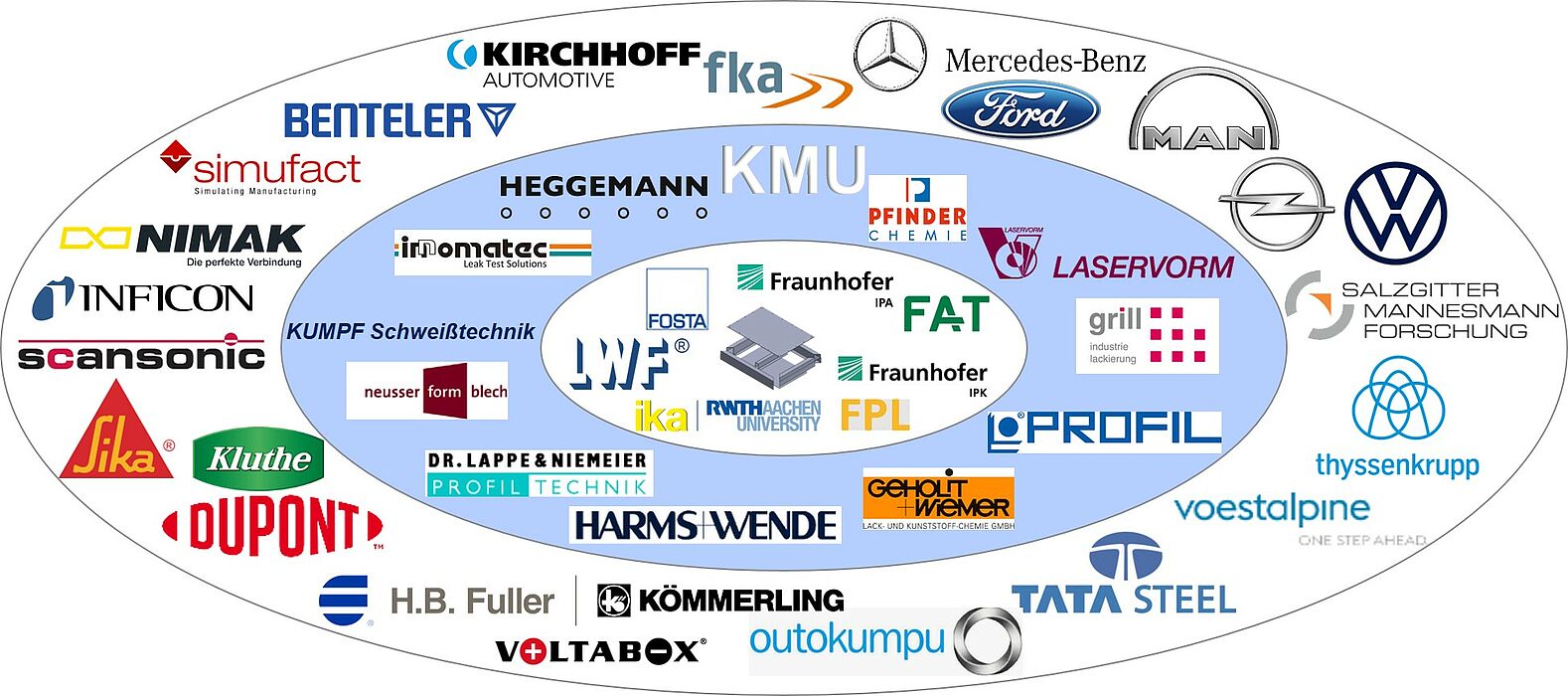Leading technologies for the energy revolution - New research project „Concept development of a steel battery housing with special consideration to the joining technology and the corrosion protection (Steel Battery Housing)“
Current ecological, economic and social changes are leading to a rethink in the development and design of future vehicles. In particular, the reduction of CO2 emissions over the entire life cycle is in focus as an important requirement. The current targets for fleet consumption can currently only be achieved with electrified vehicles, so this will lead to an increase in such vehicles on the market. In common concepts, the massive energy storage units of these vehicles, which mainly consist of lithium-ion cells, are integrated within a battery housing in the underbody area of the vehicle structure [1, 2]. The requirements regarding corrosion protection are comparatively high due to direct external environmental effects. In addition, very high demands are placed on the battery housing in terms of crash safety, leak tightness and installation space. Above all, the high crash safety requirements can be met comparatively well with steel battery housing concepts by selecting high-strength steel grades in line with the requirements. In addition, steel materials have a more positive CO2 balance in primary production than is generally the case with alternative lightweight materials. The good fire protection properties also make the use of steel in battery housing structures particularly interesting [3]
The great potential of steel battery housings is currently being countered by a number of challenges that are preventing market introduction. Due to the higher material density, lightweight construction with steel is a more complex task than with aluminum and FRP. However, the higher stiffness and strength make it possible to design structures with a lower volume input of the material, if the concept is designed correctly. Furthermore, intensive functional integration can minimize material requirements and thus the weight of the system. Despite low CO2 emissions during production, higher emissions during the operating phase are to be expected in the case of a higher weight of the battery housing. Therefore, an LCA analysis over the entire life cycle is essential.
The elementary conflicts of objectives described here are to be investigated in detail and solutions are to be developed to enable a clear competitive edge in this mobility industry sector, which is strongly undergoing change, is fiercely contested internationally and is of systemic relevance for Germany as a production location.
Achieving the German government's ambitious goal of reducing CO2 pollution in the coming years with a significantly higher proportion of electrically powered vehicles, especially in urban areas, can only be achieved by offering attractive electric vehicles in the lower price segment. For example, the average price of a new car in 2019 was around 33,000 €. [4] The goal should be to create a large supply of electrically powered vehicles in this price range. Steel materials are inexpensive, available and also established materials among SMEs, which can make a decisive contribution to achieving this goal.
The aim of the project is therefore to design a steel battery housing with particular attention to joinability and corrosion protection. The increased use of steel poses far-reaching challenges in terms of design, joining technology and corrosion protection. These will be specifically researched in this project in order to enable SMEs in particular to participate in the emerging process chains at an early stage, as they do not have the necessary resources. In each case, processes will be investigated which enable the economical and sustainable production of battery housings in steel construction for both smaller and larger quantities.
The interdisciplinary research project is divided into four subprojects, each of which is supported by a Project Advisory Committee of the industrial companies.
In addition to the Laboratory of Materials and Joining Technology (LWF) at the University of Paderborn, the Institute for Automotive Engineering (ika) at RWTH Aachen University, the Fraunhofer Institute for Production Systems and Design Technology (IPK) in Berlin and the Fraunhofer Institute for Manufacturing Engineering and Automation (IPA) in Stuttgart are also involved in the project.
The participating research institutes have different research focuses according to their competence profile and cover the required disciplines.
The Research Association for Steel Application e. V. (FOSTA) is responsible for the comprehensive project management of the interdisciplinary project. (FOSTA). The Research Association for Automotive Technology (FAT) and the Research Association for Pigments and Coatings (FPL) are supporting the research project as cooperating research associations.
The scientific management of the overall project with a duration of 30 months and a funding volume of more than 1.3 million € will be taken over by Prof. Meschut from the LWF.
The project is funded by the German Federal Ministry for Economic Affairs and Energy (BMWi) within the context of a program cooperation of the seventh energy research program and the joint industrial research.
[1] BRAUN, T. Der Audi e-tron Vortrag Aachener Karosserietage 2019 Aachen, 2019
[2] KOLLMEIER, M., KWAST, T., SEDLMAYR, M. Artikel „Modulare Karosserieplattform für die Elektromobilität“ Automobiltechnische Zeitschrift, Band121, Ausgabe 5 Springer Vieweg, Wiesbaden, 2019
[3] THYSSENKRUPP STEEL EUROPE Internetauftritt – „Das selectrify®-Batteriegehäuse aus Stahl: Da kann Aluminium einpacken“ www.thyssenkrupp-steel.com/de/branchen/automobiltrucks/elektromobilitaet/batteriegehaeuse/, abgerufen am 10.07.2020 thyssenkrupp Steel Europe AG, Duisburg, 2020
[4] DEUTSCHE AUTOMOBIL TREUHAND GMBH Pressemeldung – DAT Report 2020 Deutsche Automobil Treuhand GmbH, Ostfildern, 2020

